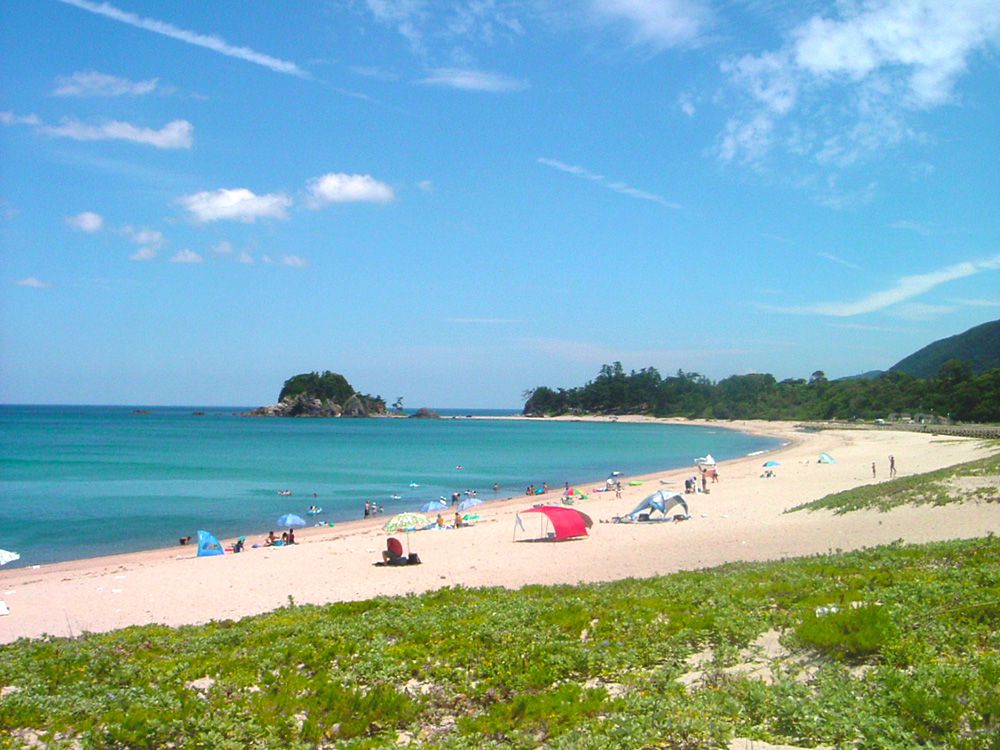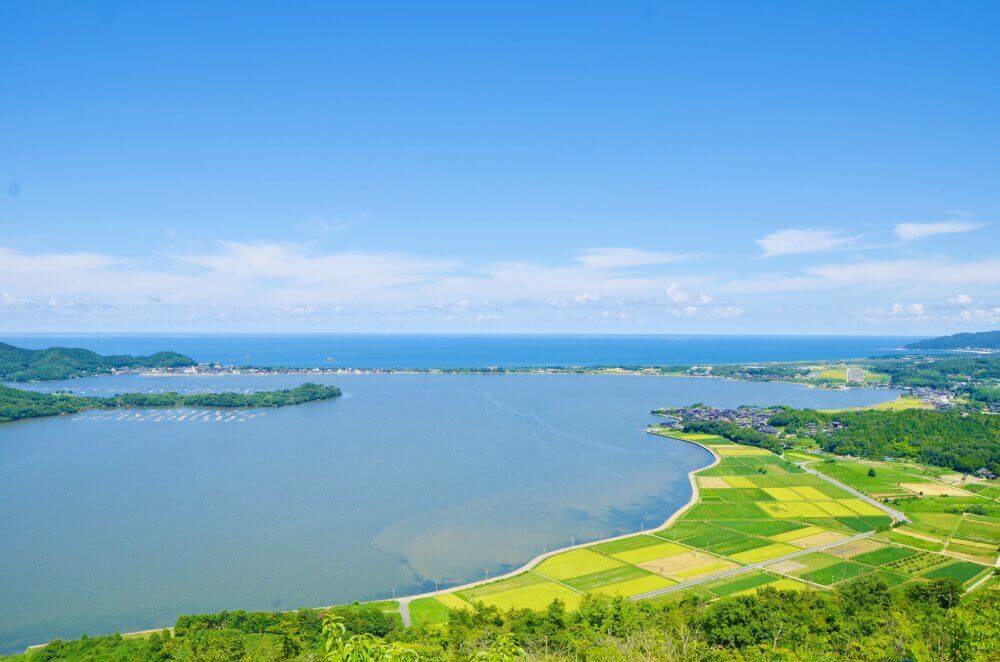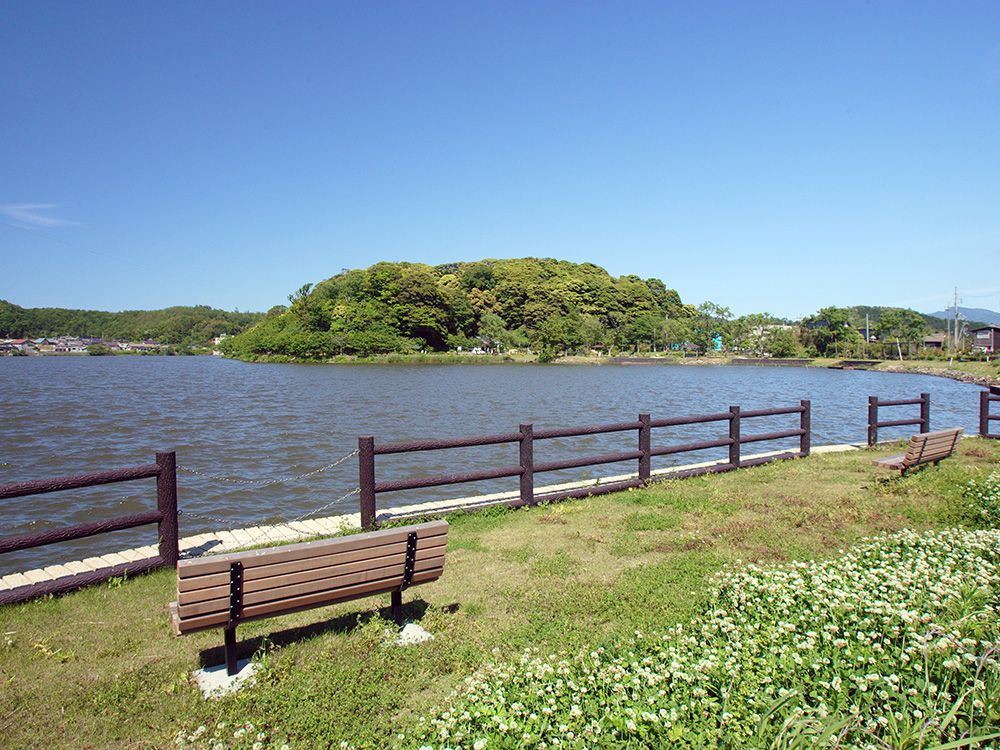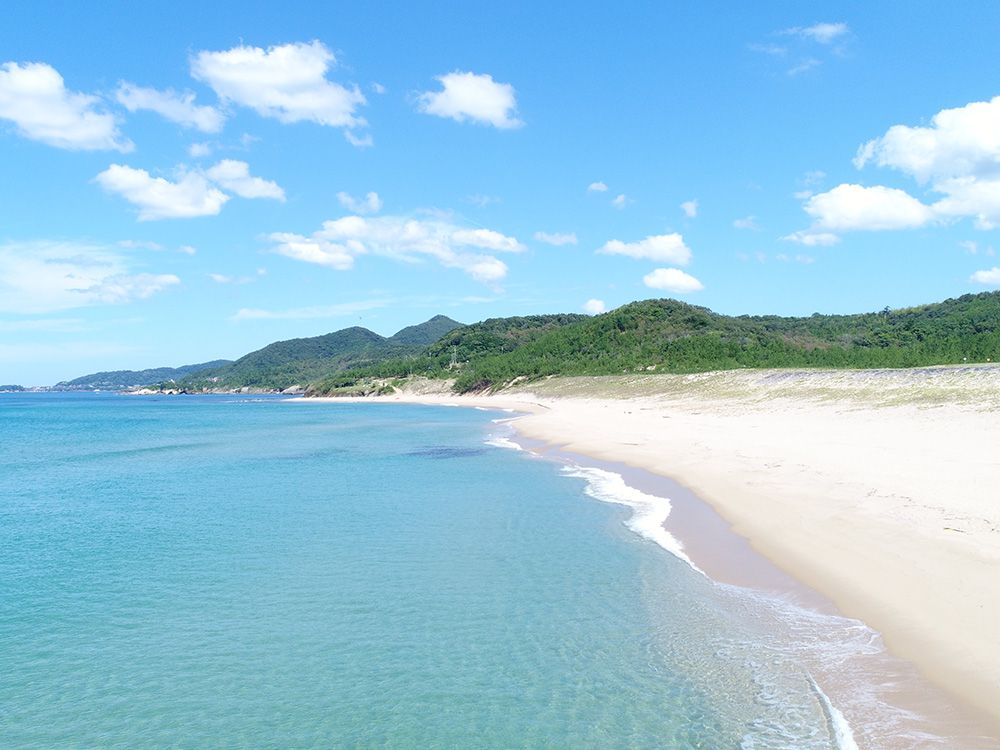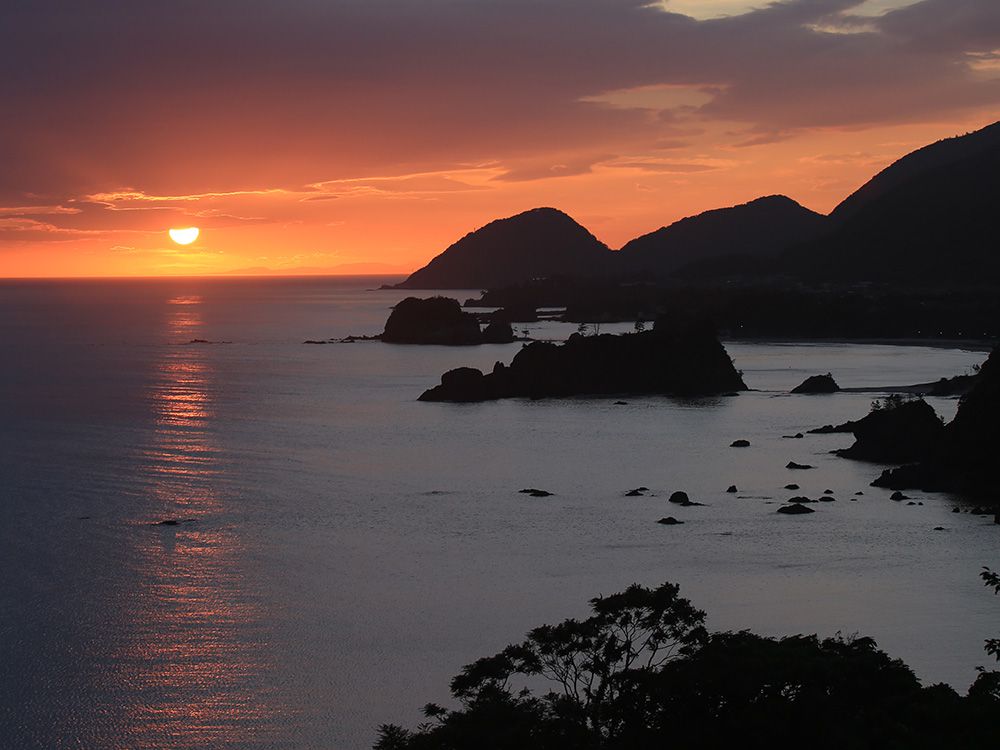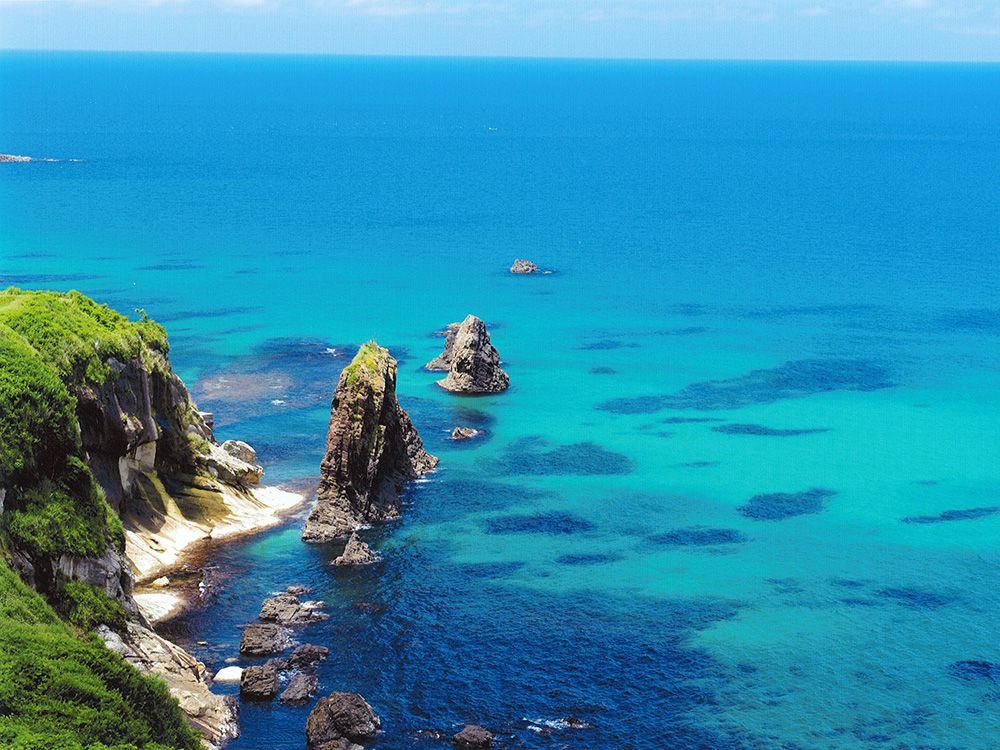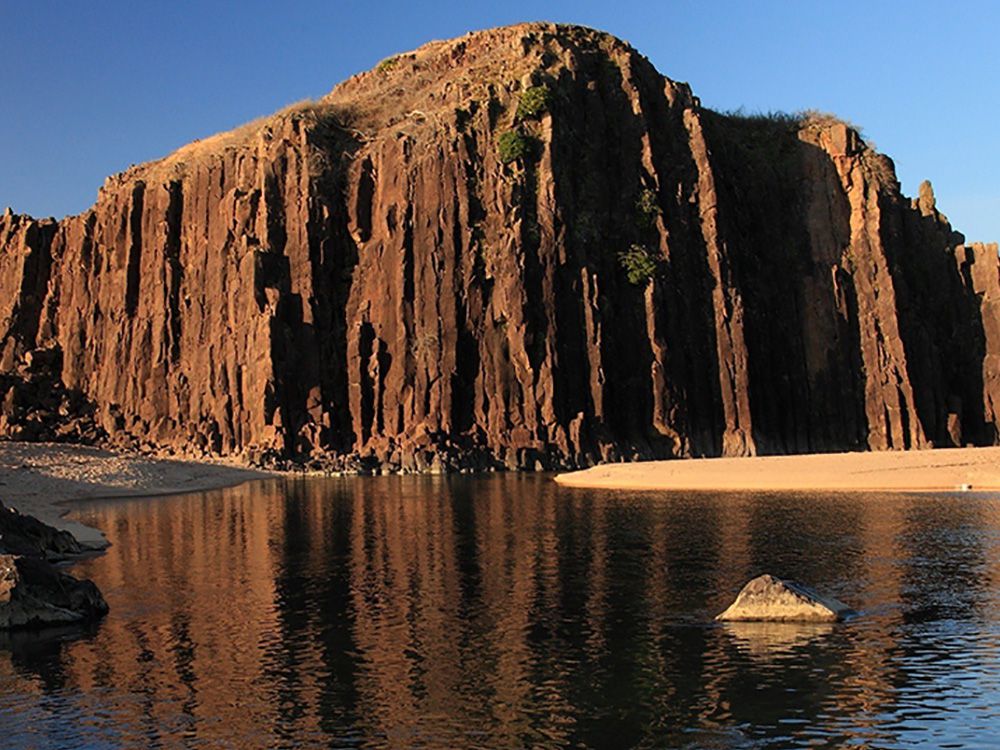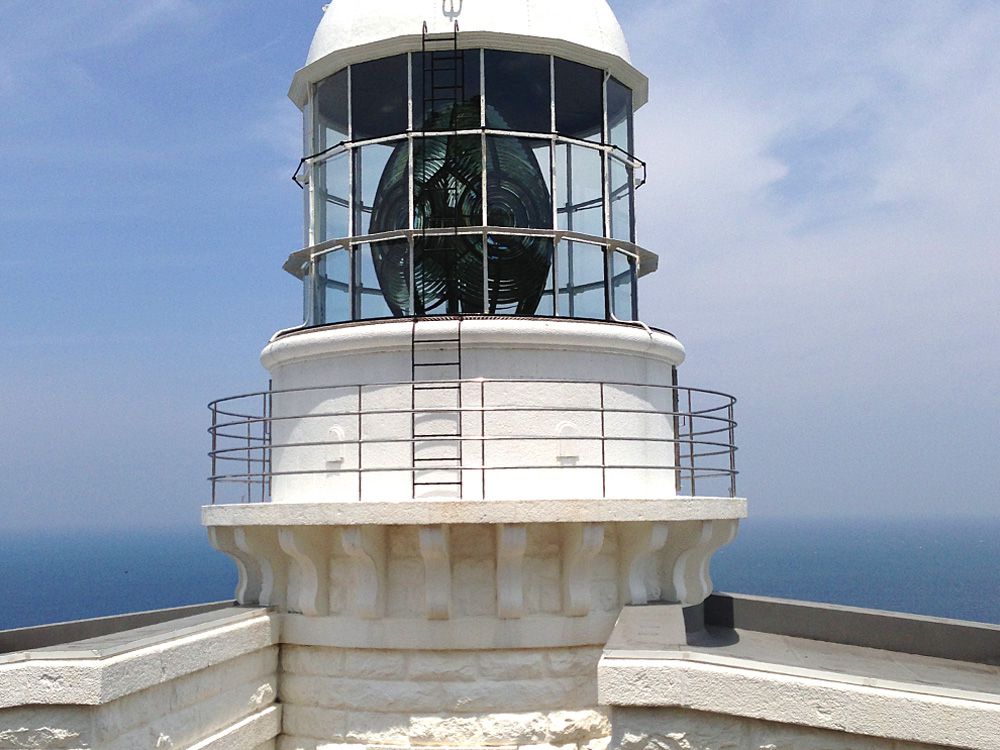Hei Beach
-
Hei Beach
Closed until further notice. Hei Beach, located in Tango, is tucked into the “Tango Matsushima” area. Whether you want to try fishing by the rocks or just enjoy the beautiful natural scenery, you'll be able to enjoy your time in these crystal clear waters. This beach is 5 minutes away by…
-
Kumihama Bay
“Kumihama Bay” is separated from the Sea of Japan by a narrow strip of land called Shotenkyo. The view of this calm inland sea has been designated as part of the Kyoto Prefecture Cultural Landscape. The plankton rich waters of the bay make it an excellent spot for oyster farming. And the meaty, te…
-
Lake Hanare
Lake Hanare is the largest freshwater lake in Kyoto Prefecture, as well as a Class B river. The Lake Hanare Park is on a mountain peninsula sticking into the lake. It has promenades for walks and benches for resting, there is a small children's play area too. In the Spring, the lakeside is brighten…
-
Kotohikihama Beach
Kotohikihama Beach is famous for its singing sand and as a scenic spot with white sand and pine trees. It stretches on for 1.8 kilometers. The beach has also been designated by Japan as a Natural Monument and Scenic Beauty. The squeaking noise made with each step is due to the friction of the quart…
-
Tango Matsushima Islands
Tango Matsushima takes its name from its resemblance to Matsushima, one of the three great views of Japan. The view of the ragged coastline, which goes on until it reaches Cape Kyoga, creates a beautiful silhouette against the morning and evening light. There is an observation deck near Inugasaki B…
-
Byobuiwa (folding-screen rock)
Byobuiwa rock is an andesite with a height of 13 meters, and was named for its resemblance to a Japanese folding screen (Byobu) as it rises from the ocean surface. There are 5 smaller rocks in a line towards the north-west which indicate a change in the plateau. There is an observation area along N…
-
Tateiwa (Standing Rock)
Tateiwa rock represents the Tango area in the San’in Kaigan Geopark. It is a huge monolith with a height of 20 meters. This boulder is made up of hardened magma that emerged from a geological stratum, including volcanic dust which accumulated over 15 million years ago. Since rocks which emerged from…
-
Kyogamisaki Lighthouse
Kyogamisaki Lighthouse stands on top of a cliff 148 meters above sea level at the most northern point of the Tango Peninsula. Its chalk white color stands in stark contrast to the blue sky and sea. The lighthouse was built in 1898, and is one of five first-order lighthouses in Japan which use a rar…

